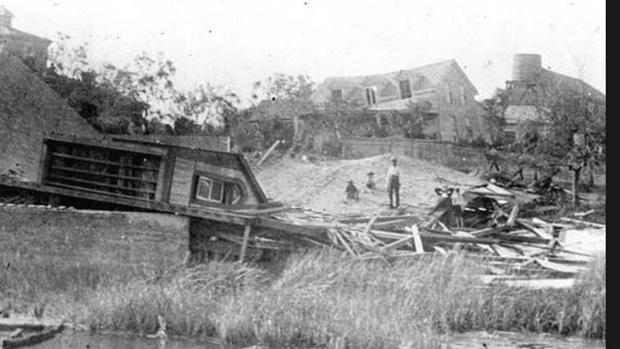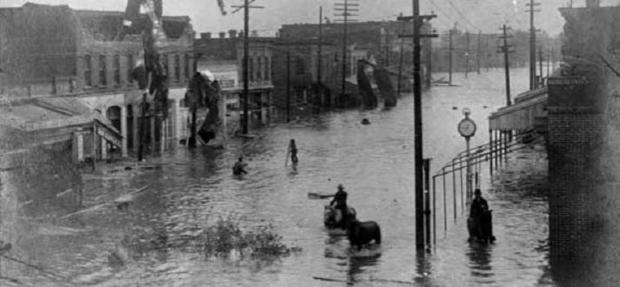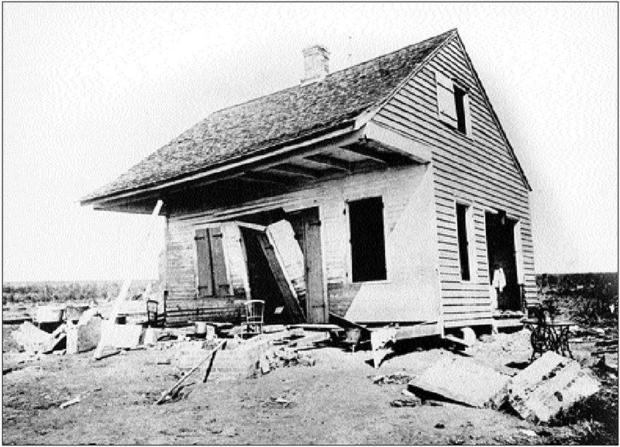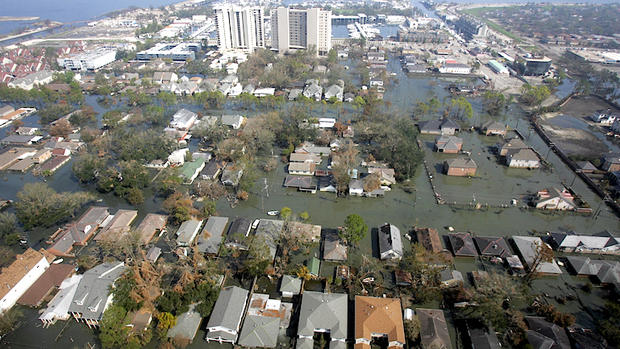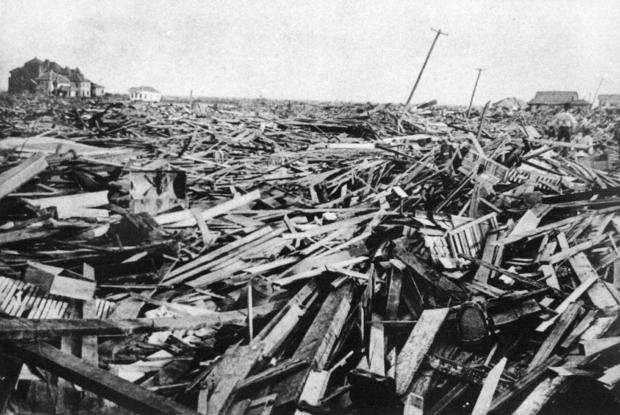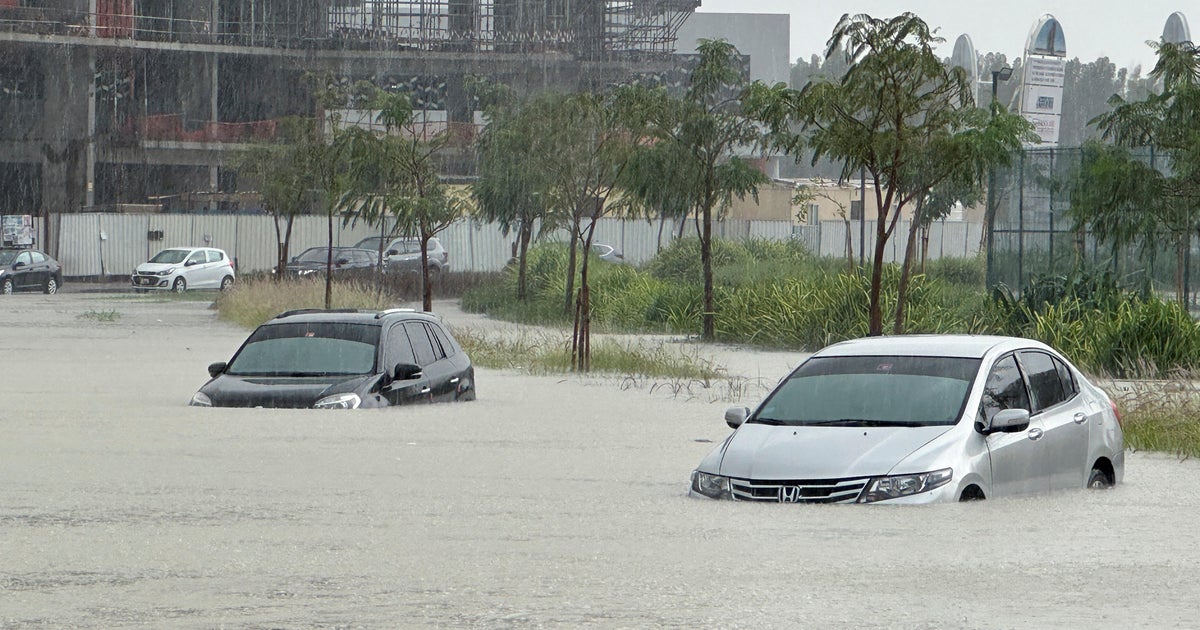Top 10 deadliest hurricanes in U.S. history
The 2023 Atlantic hurricane season is underway, and forecasters expect at least two to five major hurricanes.
The National Oceanic and Atmospheric Administration predicted "above-normal" hurricane activity in the Atlantic this year, which is expected to be less active than in recent years.
Scientists said this hurricane season they expect somewhere between 14-21 named storms, which are storms with winds of 39 mph or higher.
Of those storms the NOAA predicts six to 11 will become hurricanes, with winds of 74 mph or higher, and two to five of those are forecasted to become major hurricanes with winds of 111 mph or higher.
The forecast is good news following destructive and deadly hurricanes that have struck the U.S. in recent years such as Hurricane Ida in 2021 and Hurricane Ian in 2022.
Here are the top 10 deadliest recorded hurricanes in U.S. history, according to the National Weather Service.
10. Last Island hurricane
The Last Island hurricane killed 400 people after slamming into the Louisiana coast in August 1856.
The highest points of the island were left under 5 feet of water in the wake of the storm, with the resort hotel and surrounding gambling establishments destroyed, according to NOAA.
The island itself was devastated, left void of vegetation, and split in half, NOAA said.
9. Labor Day hurricane
The Great Labor Day hurricane roared through Florida in September 1935, becoming what the NHC says is the most intense ever to make landfall in the U.S. It caused the deaths of 408 people and did an estimated $6 million in damage, the NOAA said.
The victims were primarily World War I veterans working in the Florida Keys, according to the NHC.
8. Hurricane Audrey
Hurricane Audrey killed 416 people after slamming into Louisiana and Texas in June 1957.
The storm's 8- to 12-foot storm surges penetrated southwestern Louisiana, according to the NHC.
Hurricane Audrey caused an estimated $150 million in damage in the U.S., the NHC said.
7. Georgia/South Carolina hurricane
The Georgia/South Carolina hurricane of August 1881 caught residents along the Georgia coast by surprise.
The destructive Category 2 storm, which made landfall at high tide, killed at least 700 people.
The storm has no name because it struck almost seven decades before the National Hurricane Center began lending names to storms in the early 1950s.
6. Sea Islands hurricane
The Sea Islands hurricane struck Savannah, Georgia, in August 1893.
The Category 3 storm reached wind speeds of 121 mph, and a 16-foot storm surge, according to the New Georgia Encyclopedia, and 2,000 people were killed by the storm and 30,000 were left homeless, according to the New Georgia Encyclopedia.
The hurricane was one of three deadly hurricanes during the 1893 Atlantic hurricane season and caused substantial damage, totaling $1 million.
5. Chenière Caminada hurricane
This storm decimated Chenière Caminada, a fishing community in Jefferson Parish, Louisiana when it made landfall in October 1893.
Known as the Great October Storm, the Category 4 hurricane killed around 2,000 people, of which approximately 1,100–1,400 occurred onshore, according to the NHC.
The storm also destroyed many vessels and wiped out large portions of towns and crops, according to the Louisiana State University Library.
4. Hurricane Katrina
Hurricane Katrina devastated the Gulf Coast in August 2005. Katrina is responsible for approximately 1,200 reported deaths, including about 1,000 in Louisiana, 200 in Mississippi and seven additional deaths in southern Florida, according to the NHC.
The greatest devastation occurred in New Orleans and other Louisiana communities, but Mississippi, Alabama and Florida were also affected. The destruction was mostly due to flooding from storm surges and levee failures in the New Orleans metropolitan area that resulted in the inundation of much of the city and its eastern suburbs.
3. 1928 Okeechobee hurricane
The Okeechobee hurricane killed at least 2,500 people when it swept over Puerto Rico and the southern United States in 1928.
A great number of houses and buildings were swept away in the storm, with the worst of the destruction occurring at inland Lake Okeechobee in Florida, where the hurricane caused a lake surge of six to nine feet that inundated the surrounding area, according to the NHC.
The hurricane caused an estimated $50 million in property damage in Puerto Rico and $25 million in Florida, the NHC said.
The lake surge killed 1,836 people in Florida. An additional 312 people died in Puerto Rico, and 18 people were reported dead in the Bahamas, according to the NHC.
2. Hurricane Maria
Hurricane Maria was a Category 4 hurricane that smashed into Puerto Rico on Sept. 20, 2017, devastating the island for months after it hit.
After initial reporting that 64 people were killed, a 2018 study determined the actual death toll to be 2,975.
To arrive at the 2,975 figure, the study, commissioned by the governor of Puerto Rico and conducted by researchers at George Washington University's Milken Institute School of Public Health, looked at historical death patterns from 2010 to 2017 to estimate how many people would have died had Hurricane Maria not hit the island.
That figure was then compared with the actual number of deaths from September 2017 through February 2018 — obtained in records provided by the Puerto Rico Vital Statistics Records division of the Puerto Rico Department of Health — to determine what the report describes as the "estimate of excess mortality due to the hurricane."
1. Great Galveston Hurricane
The Great Galveston Hurricane decimated the island city on the Gulf Coast of Texas on Sept. 8, 1900.
This hurricane is known as the deadliest weather disaster in United States history, killing at least 8,000 people, with some estimates as high as 12,000 people.
More than 10,000 people were left homeless and property damage was estimated at $30 million, according to the NHC.

